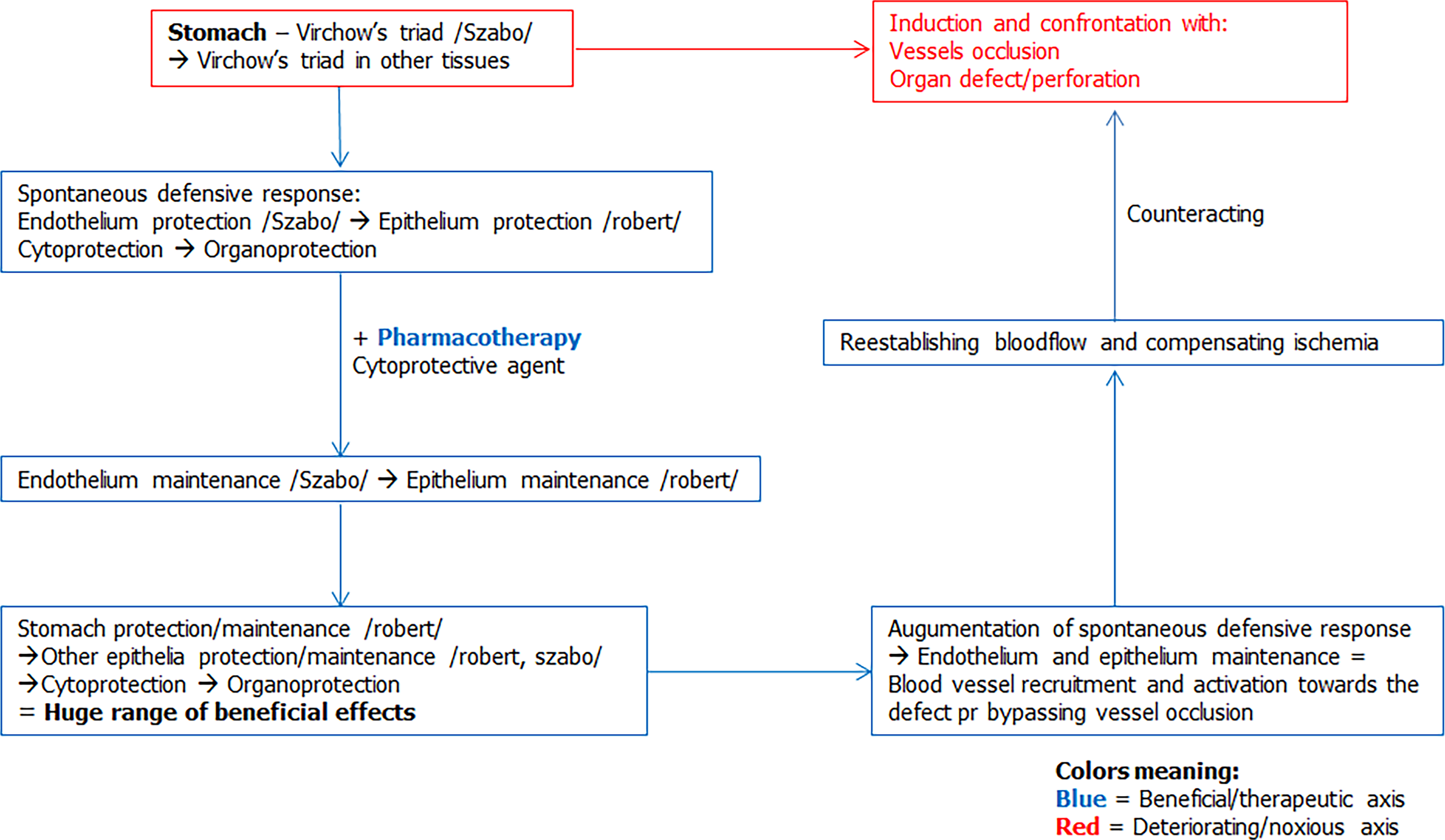Copyright
©The Author(s) 2022.
World J Gastroenterol. Jan 7, 2022; 28(1): 23-46
Published online Jan 7, 2022. doi: 10.3748/wjg.v28.i1.23
Published online Jan 7, 2022. doi: 10.3748/wjg.v28.i1.23
Figure 1 Summarizing the essential epithelium and endothelium protection interplay known in Robert’s and Szabo’s cytoprotection concept, and the role of the stable pentadecapeptide BPC 157 as a likely mediator, we suggest that BPC 157 may be a useful cytoprotective therapy.
Hopefully, it may finally realize in the practice the huge theoretical importance of all aspects of the cytoprotection concept. Conceptually, there is a new point, namely, endothelium maintenance to epithelium maintenance (the recruitment of collateral blood vessels to compensate for vessel occlusion and reestablish blood flow or bypass the occluded or ruptured vessel). BPC 157 counteracts various venous occlusion-induced syndromes, inferior caval vein syndrome, ischemia-reperfusion injury following the Pringle maneuver, and Budd-Chiari syndrome in rats. Activation of the alternative collateral pathways to bypass occlusion, and reestablishing alternative blood flow, result in the counteraction of the full consequent perilous syndromes.
- Citation: Sikiric P, Skrtic A, Gojkovic S, Krezic I, Zizek H, Lovric E, Sikiric S, Knezevic M, Strbe S, Milavic M, Kokot A, Blagaic AB, Seiwerth S. Cytoprotective gastric pentadecapeptide BPC 157 resolves major vessel occlusion disturbances, ischemia-reperfusion injury following Pringle maneuver, and Budd-Chiari syndrome. World J Gastroenterol 2022; 28(1): 23-46
- URL: https://www.wjgnet.com/1007-9327/full/v28/i1/23.htm
- DOI: https://dx.doi.org/10.3748/wjg.v28.i1.23









